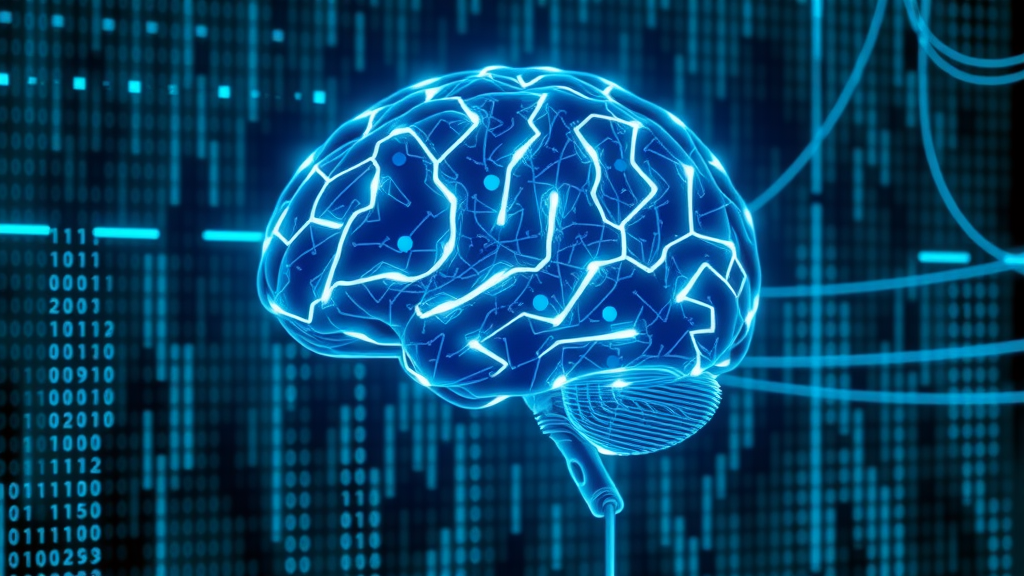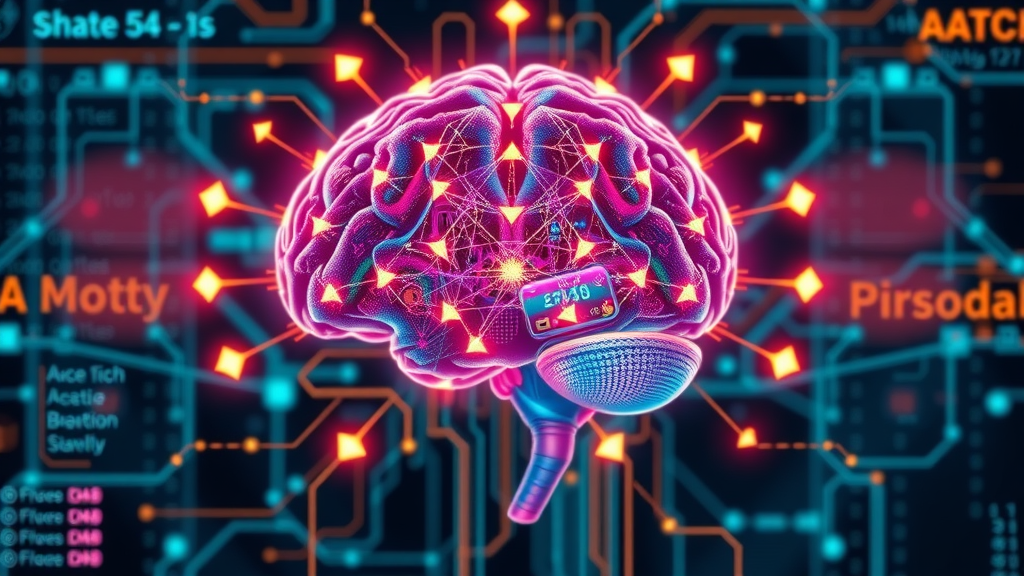Did you know over 50% of Fortune 500 companies are now leveraging large language models to accelerate innovation? The AI revolution isn’t coming. It’s here—and you’re already a part of it. The apps you rely on, the answers you get online, and even the words you write are being shaped by powerful AI models every day. Whether you realize it or not, large language models are quietly—and dramatically—changing the way we work, learn, and connect. In this guide, you’ll discover how the magic behind these AI models is already at play in your life, and how you can use it to unlock even greater potential.
Key Takeaways: Why Large Language Models Matter to Everyone
- Large language models are behind the most advanced AI applications today, impacting everything from search to personal assistants.
- They provide unprecedented improvements in context-awareness, understanding natural language, and generating human-like text.
- Real-world examples and storytelling show how anyone—even non-techies—can benefit from large language models.

What You’ll Learn in This Guide to Large Language Models
- What large language models are—and what makes them magical
- The science behind these AI-driven models: transformer model, foundation model, and attention mechanism
- Real-life examples of generative AI, text generation, code generation, and more
- How to use large language models to solve real-world problems
- The future of language models—and how you can stay ahead
A Surprising Start: How Large Language Models Are Already Changing Your World
“Did you know over 50% of Fortune 500 companies are now leveraging large language models to accelerate innovation? The AI revolution isn’t coming. It’s here—and you’re already a part of it.” – Industry Expert

Large language models have swiftly moved from science fiction to the frontlines of your daily experience. If you’ve ever asked a voice assistant to play your favorite song, seen an email drafted for you automatically, or used an app that summarizes news articles, you’ve already met a large language model. These AI models, powered by deep learning and massive training data, now function behind the scenes in search engines, customer support, and creative tasks.
What makes this shift so surprising is the rapid evolution and invisibility of these technologies. Unlike the computers and phones we can see and touch, large language models work silently in the background, improving everything from the accuracy of online translations to the speed of legal paperwork. Their core superpower is understanding natural language the way humans do—grasping not only vocabulary but also context, tone, and even humor. This helps businesses respond faster, makes information more accessible, and puts cutting-edge AI tools in everyone’s hands—no coding required.
As large language models continue to evolve, their impact on digital marketing is becoming even more pronounced. For a closer look at how generative AI is actively transforming marketing strategies and driving innovation in 2025, explore the insights in this deep dive on the AI revolution in marketing.
The Foundation: What Is a Large Language Model? (People Also Ask: What is a large language model?)
Defining Large Language Models and Their Role in Natural Language Processing

A large language model is a type of artificial intelligence designed to deeply understand and generate human language. They’re called “large” because they’re trained on massive amounts of text data—from books and articles to code and conversations—allowing them to recognize patterns, context, and meaning in ways that traditional AI couldn’t imagine. These models belong to the family of neural networks and use deep learning to process and generate text, making them highly effective for tasks like answering questions, translating languages, or even composing music.
In practical terms, you’ve likely interacted with a large language model through chatbots, virtual assistants, or even social media algorithms. At their core, these advanced AI models rely on natural language processing (NLP) to break down, understand, and construct text that makes sense to humans. Using millions—or even billions—of parameters, a large language model learns not just the rules of grammar, but the subtle cues that guide meaningful communication. This shift from simple, rule-based programming to complex learning models has made large language models the engine powering today’s smart applications.
From Theory to Reality: The Rise of Language Models
How Language Model Technology Evolved: From Rule-Based Systems to Neural Networks
The journey of language models is a story of rapid leaps. In the early days, computer scientists used simple rules to process language: “If a sentence starts with ‘Who,’ it’s probably a question.” These old-school systems didn’t understand language—just the most basic structure. As digital content exploded, it became impossible to write rules for every single case in human language. That’s where machine learning and neural networks changed the game.
Today’s large language models use neural networks—computer systems inspired by the human brain—to “learn” language from huge datasets. These models, especially those using transformer architecture, have proved especially powerful. With self-attention mechanisms, they can weigh the meaning of each word in context, not just memorize sequences. This shift let technology move from clunky, robotic responses to fluid text generation and natural conversations. Thanks to advances in deep learning and the ever-growing pool of training data, the line between human and machine language gets a little blurrier every day.
AI in Action: Generative AI and the Power of Large Language Models
Generative AI: The Core Use Cases for Large Language Models
- Automated content creation
- Advanced chatbots and digital assistants
- Code generation and debugging
- Summarization and translation
- Personalized marketing and recommendations
“Large language models are like the Swiss Army knives of AI—versatile, reliable, and always evolving.” – Tech Futurist

Generative AI, and especially large language models, are influencing the world in visible and invisible ways. For instance, when businesses want to quickly generate new blog content, an AI model can draft articles in seconds. In customer service, chatbots powered by large language models offer 24/7 support, while maintaining friendly and natural conversations. Even programmers now rely on models for code generation and debugging, letting AI convert plain English into working programming languages.
In marketing, these models analyze vast volumes of data to personalize recommendations or summarize mountains of information within seconds. Generative AI is also changing how people interact with content: from instant translations across dozens of languages to on-the-fly summaries of lengthy texts. All these advances are thanks to large language models, which continually learn and adapt as they process more data. As these learning models evolve, their role in streamlining tasks, sparking creativity, and accelerating innovation grows even stronger.
How Large Language Models Actually Work: The Science Behind the Magic
Delving Into Transformer Models: The Engine of Modern AI Language Models
What makes a large language model so much smarter than older types of AI? The answer lies in transformer models. Developed in 2017 by Google researchers, the transformer model introduced something called “attention mechanisms.” This feature allows the AI to decide which words and phrases in a sentence matter most—similar to how you focus on a particular sentence when reading a book. The transformer model excels at text generation, translation, and even code generation because it can analyze relationships between words, sentences, and even paragraphs in context.
Unlike earlier models, transformer models are massively scalable. They harness the power of deep learning and large training data collections, allowing millions and billions of parameters to refine their understanding of language. This scalability means large language models don’t just memorize—they generalize, making them powerful tools for question answering, language translation, and generating insightful content. Whether it’s summarizing a news article or composing a poem, the transformer architecture lets large language models perform language generation tasks that feel distinctly human.
Foundation Models, Attention Mechanisms, and Learning Patterns
Foundation models are broad, pre-trained AI models that serve as the starting point for many language understanding tasks. These models, built using transformer architecture, can be fine-tuned for specific challenges like summarization, translation, or text generation. The attention mechanism helps the model track which words or phrases are most important in understanding meaning—allowing for deeper context awareness and smarter responses.
To train these AI models, vast quantities of data—from historical texts to current websites—are fed into the neural network. Through this process, the model learns language patterns, nuances, and even cultural references. Learning models like these are not just mimicking human speech, but evolving, using ongoing supervised learning and community feedback to constantly get smarter. This is why each new version of a large language model outperforms the last, adapting quickly to new tasks in our ever-changing world.
| Model Type | Key Feature | Typical Use-Case |
|---|---|---|
| Foundation model | Generalized understanding | Pretraining for tasks |
| Transformer model | Self-attention and scalability | Generative AI, language tasks |
| Large language model | Large-scale data and context | Summarization, Q&A |

Everyday Applications: Stories of Large Language Models in the Real World
Real-Life Successes: From Medical Diagnoses to Creative Storytelling
- AI-powered medical scribing
- Automated legal document creation
- Personalized customer service bots
- Creative text generation for writing and marketing
“After integrating a large language model, our customer support response time dropped by over 60%. It’s a game-changer.” – Digital Marketing Director

The most exciting part of large language models is how they’re already solving real challenges. In hospitals, AI-powered scribes help doctors document patient visits, freeing up time for care instead of paperwork. Law firms harness these models for automated contract creation—saving hours of repetitive work. Think about those times when you chat online with a customer support agent: chances are, it’s a large language model handling your questions instantly and politely.
Creative professionals are using large language models for everything from brainstorming story ideas to generating product taglines and marketing copy. School students turn to generative AI for help summarizing research. In each case, these models are doing more than repeating answers—they’re learning, adapting, and making life easier for all of us. The stories are endless, and new applications appear daily as technology advances and more people discover the power of AI-driven language models.
Inside the Language Model: Natural Language Understanding and Generation
Text Generation: How AI Writes, Composes, and Helps You Create
At its heart, text generation by a large language model is like magic. When you type a question or prompt, the model uses what it “knows” from its training data to predict the sequence of words that will make the most sense. This goes beyond simple copy-paste. The AI looks for meaning and structure, checks context, and then generates text that reads naturally. Whether it’s producing social media posts, essays, or poetry, text generation means the AI can write for you—or with you—right away.
This capacity for natural language generation fuels content creation tools, news summarizers, and even digital storytelling apps. Because these large language models are trained on so much data—and can analyze so many relationships between words—they generate text that feels human and helpful. For students, marketers, and creators, the ability to generate relevant, readable writing by collaborating with an AI is a major productivity boost.
Code Generation: Turning Natural Language Into Software

Large language models don’t just write paragraphs—they write programs. With code generation, you can describe a task in English and have the AI model turn it into working code in your chosen programming language. Tools based on these models are already helping developers debug errors, automate repetitive code writing, and bring software ideas to life faster than ever.
This is possible because large language models are trained not only on natural language but also on gigantic code repositories and documentation. The AI learns syntax, best practices, and even programming tricks. With a simple prompt, you can have the model generate, check, and even explain code. This is revolutionizing education, freelance work, and full-scale software development, making advanced programming accessible to more people than ever before.
People Also Ask: Is ChatGPT a LLM?
Yes, ChatGPT is a large language model (LLM) developed by OpenAI. ChatGPT is powered by transformer models and trained on a vast dataset that includes books, articles, and websites. This allows it to have natural conversations, answer questions, and generate text in a way that feels very similar to talking to a real person. Like other large language models, ChatGPT draws on its training data and attention mechanisms to provide context-aware, helpful responses in real-time.
People Also Ask: What Is an Example of a Large Language Model?
Popular examples of large language models include GPT-4 (from OpenAI), BERT (by Google), and LLaMA (by Meta/Facebook). Each of these models is a type of AI model that uses deep learning and transformer architecture to analyze, generate, and understand human language. They’re trained on billions of words spanning many domains—from news and scientific texts to code and social media conversations—giving them state-of-the-art abilities in everything from translation to creative writing.
People Also Ask: What Is the Difference Between LLM and AI?
AI (artificial intelligence) is a broad field that covers any computer system simulating tasks usually requiring human intelligence—like learning, reasoning, or problem solving. A large language model (LLM) is a specific kind of AI model focused on understanding and generating human language. In other words, all large language models are AI, but not all AI are large language models. AI includes models for vision, speech, or even gameplay, while LLMs handle text, speech, and language-based tasks using advanced neural networks and natural language processing.
(Watch the animated explainer video above to see step-by-step how large language models understand your text, generate natural responses, and are changing everyday technology.)
(See real-world stories come to life in this case study video, showing how LLMs help in healthcare, education, marketing, and more.)
Large Language Models vs. Traditional Language Models: What Sets Them Apart?
Comparative Table: Foundation Model, Transformer Model, and Large Language Models
| Model | Data Scale | Performance | Applications |
|---|---|---|---|
| Traditional language model | Small | Limited | Basic tasks |
| Transformer model | Medium-Large | High | Diverse |
| Large language model | Very Large | State-of-the-art | Advanced AI |
Why Large Language Models Excel: The Attention Mechanism Advantage
The secret sauce of modern large language models is their attention mechanism. This part of the transformer model lets the AI focus on the most important parts of text or a question—just like people do when listening or reading. As a result, large language models handle long sentences, ambiguous questions, and complex context far better than traditional models. This “attention” to detail empowers the models to generate more useful text and adapt quickly to new language tasks, making them so effective for question answering, summarization, and more.
It’s this powerful combination—scalability, deep learning, and smart attention—that helps large language models excel where older models couldn’t compete. That’s why applications powered by LLMs sound more natural, solve problems faster, and keep getting better over time.
Lists: Key Features and Capabilities of Large Language Models
- Massive scalability in training data
- Deep context awareness
- Multi-modal capabilities (text, code, images)
- Quick adaptation to new domains
- Ongoing improvements from community feedback

These features make large language models flexible and powerful tools for almost any task involving language. They’re always learning, adapting, and expanding to help users tackle new challenges—whether you’re a student writing a paper, a developer coding an app, or a business owner automating operations.
The community-driven approach is especially important. Every user interaction can help improve trained model accuracy, expand capabilities, and open up entirely new uses for the world’s most advanced AI models.
FAQs: Your Top Questions About Large Language Models Answered
-
How do large language models process multiple languages?
Large language models are trained on multilingual datasets, which allows them to recognize and generate text in many languages. Thanks to their context awareness and advanced attention mechanisms, these models can switch seamlessly between different languages—even within the same conversation. -
Are large language models privacy-safe?
Most LLMs are trained using public and non-personal datasets, with privacy and security in mind. However, it’s important to use reputable AI providers and verify any model’s privacy standards if you’re working with sensitive information. -
Can large language models replace humans in creative fields?
While LLMs are powerful at generating and editing content, they work best as creative partners, not replacements. Their strength is in augmenting human creativity—helping brainstorm, edit, or automate tasks—while people provide intuition and original vision. -
What are the limitations of current generative AI models?
Large language models can sometimes miss subtle nuances, misinterpret rare data, or generate reasonable-sounding but incorrect text (“hallucination”). They rely on their training data and need ongoing human guidance to improve accuracy and trustworthiness.
Next Steps: Bring the Magic of Large Language Models Into Your Life
Large language models are changing the way we live, learn, and create—unlocking new possibilities for everyone. Whether you want to boost productivity, explore AI creativity, or stay ahead in a tech-driven world, now is the perfect time to discover what these incredible models can do.
I hope you enjoyed reading our blog. If you would like assistance with your marketing, give us a call at 207-710-1449 or visit our website at www.digitalmarketingall.org.
If you’re inspired by the possibilities of large language models and want to take your digital presence to the next level, consider exploring how advanced AI can help you stand out in search results. Our comprehensive guide on increasing your business’s search visibility in 2025 reveals actionable strategies and future-focused insights. Dive deeper to discover how the synergy between AI and SEO can unlock new growth opportunities, keep you ahead of the competition, and ensure your brand is seen by the right audience at the right time.
Large language models (LLMs) are revolutionizing the field of artificial intelligence by enabling machines to understand and generate human-like text. These models, such as OpenAI’s GPT-4 and Google’s PaLM, are trained on vast datasets, allowing them to perform a wide range of tasks, from language translation to code generation. (en.wikipedia.org)
The development of LLMs has been marked by significant milestones. For instance, Meta’s release of Llama 4 introduced advanced multimodal capabilities, processing various data formats including text, video, images, and audio. (reuters.com) Similarly, OpenAI’s GPT-4.5 has enhanced pattern recognition and reasoning abilities, making interactions feel more like conversations with a thoughtful person. (axios.com)
However, the rapid advancement of LLMs also brings challenges. Studies have shown that AI chatbots can oversimplify scientific studies and gloss over critical details, leading to potential misinterpretations, especially in sensitive fields like medicine. (livescience.com) Additionally, concerns about biases and ethical implications persist, as these models can inadvertently perpetuate stereotypes present in their training data. (en.wikipedia.org)
Despite these challenges, the potential of LLMs is immense. They are transforming industries by automating tasks, enhancing customer interactions, and providing insights from large volumes of data. As these models continue to evolve, it is crucial to address their limitations and ensure their responsible development and deployment.
 Add Row
Add Row  Add
Add 








Write A Comment